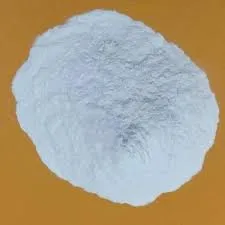
ጥቅም . 18, 2024 11:53 Back to list
Applications of Hydroxypropyl Methylcellulose in Pharmaceutical Tablet Formulations
Hydroxypropyl Methylcellulose Versatile Uses in Tablet Formulations
Hydroxypropyl methylcellulose (HPMC) is a widely used film-forming agent and excipient in the pharmaceutical industry. This multifunctional polymer plays a crucial role in the formulation of tablets, significantly impacting their properties, performance, and patient acceptance. HPMC is derived from cellulose, a natural polymer, making it a biocompatible and non-toxic option for various pharmaceutical applications. This article explores the diverse uses of HPMC in tablet formulations, focusing on its benefits, functionalities, and applications.
1. Binder in Tablet Formulation
One of the primary functions of HPMC in tablet formulations is to serve as a binding agent. As a binder, HPMC facilitates the uniform distribution of active pharmaceutical ingredients (APIs) and other excipients, ensuring consistent tablet hardness and cohesion. Its hydrophilic properties promote moisture absorption, which can enhance the mechanical strength of compressed tablets. Tablets formulated with HPMC as a binder exhibit improved physical stability, reducing the likelihood of capping or chipping during manufacturing and handling.
2. Film Coating
HPMC is extensively used as a film-forming agent in tablet coating processes. Coating tablets with HPMC not only enhances their aesthetic appeal but also provides a protective layer that can influence the release profile of the active ingredients. HPMC-based coatings can be designed to be immediate-release, delayed-release, or controlled-release, depending on the desired therapeutic effect. This versatility enables formulators to tailor drug release rates to meet specific therapeutic needs, improving drug bioavailability and efficacy.
3. Controlled Release Applications
One of the most significant applications of HPMC in tablet formulations is its use in controlled-release systems. By varying the molecular weight and substitution patterns of HPMC, formulators can manipulate the release kinetics of drugs. HPMC can function as a matrix-forming polymer in hydrogel systems, allowing drugs to be released over extended periods. This slow-release characteristic minimizes dosing frequency, enhances patient adherence, and provides a more consistent therapeutic effect.
hydroxypropyl methylcellulose uses in tablets

HPMC also exhibits disintegrant properties, aiding in the dissolution of tablets upon contact with gastrointestinal fluids. The hydrophilic nature of HPMC facilitates water uptake, leading to swelling and disintegration of the tablet matrix. This property is particularly beneficial for immediate-release formulations, where rapid dissolution is critical for effective drug absorption. By optimizing the concentration of HPMC, formulators can achieve desired disintegration times, ensuring that tablets deliver their active ingredients promptly.
5. Stabilization of Formulations
In addition to its primary roles as a binder and film-former, HPMC acts as a stabilizer in various tablet formulations. For sensitive APIs prone to degradation, HPMC can provide a protective environment that minimizes degradation caused by exposure to moisture and oxygen. This stabilizing effect is essential for maintaining the efficacy and shelf-life of pharmaceutical products. Moreover, HPMC can enhance the flow properties of powders during tablet manufacturing, further contributing to the overall stability and quality of the final product.
6. Taste Masking
HPMC is also employed for its taste-masking properties in oral tablet formulations, particularly in pediatric and geriatric products. Its film-forming capabilities can be used to encapsulate bitter or unpleasant-tasting APIs, rendering them more palatable for patients. This is particularly important in developing formulations that require high patient compliance, as taste can significantly influence a patient’s willingness to take medication.
7. Compatibility with Other Excipients
One of the key advantages of using HPMC in tablet formulations is its compatibility with a wide range of excipients. HPMC interacts well with various ingredients, including other polymers, fillers, and lubricants, making it a highly versatile component in formulation development. This compatibility allows formulators to create complex multi-functional tablets that meet specific release profiles, bioavailability requirements, and patient preferences.
Conclusion
Hydroxypropyl methylcellulose is an indispensable ingredient in modern tablet formulations, offering a wide array of functionalities that enhance the performance and appeal of pharmaceutical products. From its role as a binder and film-former to its application in controlled release and taste masking, HPMC provides formulators with the tools necessary to create effective and patient-friendly medications. As research and development in the pharmaceutical field continue to progress, the importance of HPMC in tablet formulations is likely to grow, enabling the development of even more advanced drug delivery systems.
-
The Widespread Application of Redispersible Powder in Construction and Building Materials
NewsMay.16,2025
-
The Widespread Application of Hpmc in the Detergent Industry
NewsMay.16,2025
-
The Main Applications of Hydroxyethyl Cellulose in Paints and Coatings
NewsMay.16,2025
-
Mortar Bonding Agent: the Key to Enhancing the Adhesion Between New and Old Mortar Layers and Between Mortar and Different Substrates
NewsMay.16,2025
-
HPMC: Application as a thickener and excipient
NewsMay.16,2025
-
Hec Cellulose Cellulose: Multi functional dispersants and high-efficiency thickeners
NewsMay.16,2025







